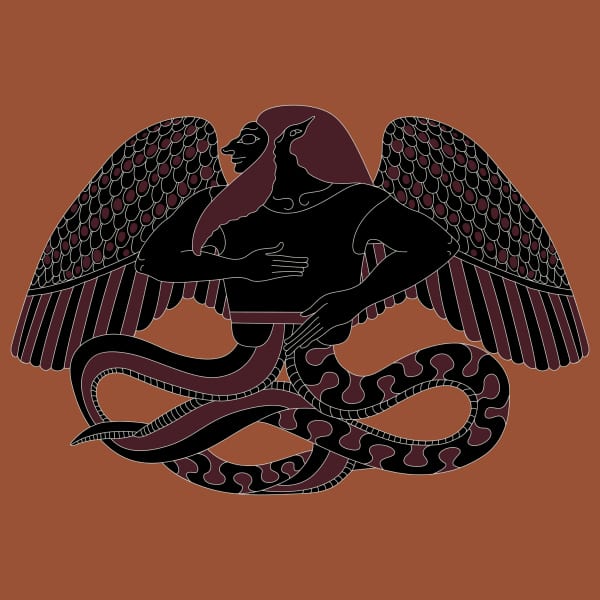Sacrifice and offerings: Appeasing the Ancient Greek monster Typhoeus
Sacrifice and offerings: Appeasing the Ancient Greek monster Typhoeus
Sacrifice and offerings: Appeasing the Ancient Greek monster Typhoeus
-
Hannah
-
Hannah

My novel Aphrodite’s Tears is set on a small Greek island near the Peloponnese peninsula of Greece. It is an island where tradition is deeply respected and ancient customs and rituals are still part of life. One ritual is regarded as especially important: that of appeasing Typhoeus, the island’s volcano.
It has been two hundred years since the last eruption, but Typhoeus is a looming presence; a threat to the islanders. ‘Grim and forbidding,’ I write, ‘it frowned over the island.’
According to the stories of Helios, Typhoeus rose from the sea and deposited its lava on one of the mountain flanks, and that was how Helios was born. The islanders named the volcano Typhoeus, after the deadliest monster of Greek mythology.

In his epic poem The Theogony, the Ancient Greek poet Hesiod described Typhon as ‘a fearful dragon’, with one hundred snake-like heads with ‘dark, flickering tongues’, and ‘from under the brows of his eyes in his marvellous heads flashed fire, and fire burned from his heads as he glared’. Others depict Typhon as in the picture above, which is a re-creation of the famous Chalcidian black-figure hydria, c. 540-530 BC, housed in the Staatliche Antikensammlungen museum in Munich. In all depictions, though, Typhon is gigantic – some said his head brushed the stars – and he is fearsome, terrible, ferocious and relentless.
But unlike the gods of Ancient Greece, Typhon did not endure. Having decided he’d like to rule the entire cosmos, he challenged Zeus, but lost the battle, and Zeus buried him beneath the earth – where, I imagine, he grumbled and rumbled and plotted, like a furious volcano.
So it is on Helios. Typhoeus is still, but from time to time it grumbles – ‘not a pretty sound … freektoh, horrible … the sleeping fire,’ an islander tells my heroine, Oriel.
In ancient times, people would try to appease such threats as a volcano through prayers, ritual sacrifices and offerings, and this is still the way of life on the island of Helios. The annual Epiklisi festival is an important day for Helios. There is a procession to Mount Helios, with everyone dressed in costume, then feasting and dancing. That is the fun part, but the festival has a serious meaning: an invocation to Typhoeus to protect the island.
When Oriel ascends the mountain, she finds a great crowd assembled at a plateau at an age-old shrine to Typhoeus:
Ancient trees formed an arc around three sides of it; they rose upwards, seemingly without end, the canopy above distant, like clouds of green. Their gnarly trunks resembled living walls and seemed to turn the place into an outdoor temple. It was as if they were ancient beings providing sanctuary, casting their protective shadow on those who came to worship at the feet of the great beast Typhoeus.
At the far end of the plateau, at the foot of the volcano, stood a black granite altar. A profusion of votive offerings had been deposited there by devout islanders: bunches of flowers, amphorae filled with grain, perfumes, wine and oil, as well as produce from the fields, orchards and olive groves of the island.
A key part of the festival is the sacrifice of a young boar. Oriel is squeamish when she sees the pit where the boar was sacrificed, but islander Mattias reminds her: ‘How can you hope to understand the Kyrios (leader) and the people of this island if you don’t understand their customs?’ Mattias then explains how the ritual is performed:
‘As the sun appears on the horizon, the beast, which has been attached all night to a tree, is brought to the edge of the pit. He is then turned upside down. His throat is slashed by a sword with a single blow so he doesn’t suffer and so that the blood soaks into the earth… the blood flowing from the animal is said to be the share of the trees and the earth. The carcass is then hung and skinned to the accompaniment of music, and the raw flesh and hide cut up and put into baskets to be distributed among the families of the islanders who have taken part in the procession… The boar’s sacrifice will be commemorated tomorrow when they plant a new tree on the plateau. That way, Typhoeus knows we remember him and pay tribute to his power.’
Oriel is a stranger to this land, an Englishwoman plunged into an archaic culture. She may well wonder at such rituals; she may wonder how the islanders can possibly believe that a boar’s blood will calm a volcano.
She would be far better, however, wondering something else:
Will these tributes to Typhoeus appease the terrible buried monster, or will his rage burst forth?
Thanks for sharing the story of Typhon